Let's talk Mastiffs
Live large: It’s the Mastiff’s calling card. The biggest dog that exists also has one of the most docile temperaments. Mastiffs have a history of being used as guard dogs but possess an even-temperedness that makes them a splendid family pet. Their terribly large limbs and big head – not to mention a face framed in folds of fur – adds up to one charming canine. Be prepared though, as the Mastiff breed is a lot of dog: Males can weigh up to 230 pounds.
Official name: Mastiff
Other names: English Mastiff
Origins: England
Drooling tendencies
5 out of 5Shedding Level
3 out of 5Energy level*
3 out of 5Compatibility with other pets
2 out of 5Warm weather?
1 out of 5Suited to apartment living
1 out of 5Family pet?*
4 out of 5Can stay alone
3 out of 5
| Male | Female |
|---|---|
| Height | Height |
| 76 - cm | 69 - cm |
| Weight | Weight |
| 72 - 104 kg | 54 - 77 kg |
| Life stages | |
|---|---|
| Adult | |
| 8 months to 2 years | |
| Mature | Senior |
| 2 to 5 years | From 5 years |
| Baby | |
| Birth to 2 months | |
Drooling tendencies
5 out of 5Shedding Level
3 out of 5Energy level*
3 out of 5Compatibility with other pets
2 out of 5Warm weather?
1 out of 5Suited to apartment living
1 out of 5Family pet?*
4 out of 5Can stay alone
3 out of 5
| Male | Female |
|---|---|
| Height | Height |
| 76 - cm | 69 - cm |
| Weight | Weight |
| 72 - 104 kg | 54 - 77 kg |
| Life stages | |
|---|---|
| Adult | |
| 8 months to 2 years | |
| Mature | Senior |
| 2 to 5 years | From 5 years |
| Baby | |
| Birth to 2 months | |
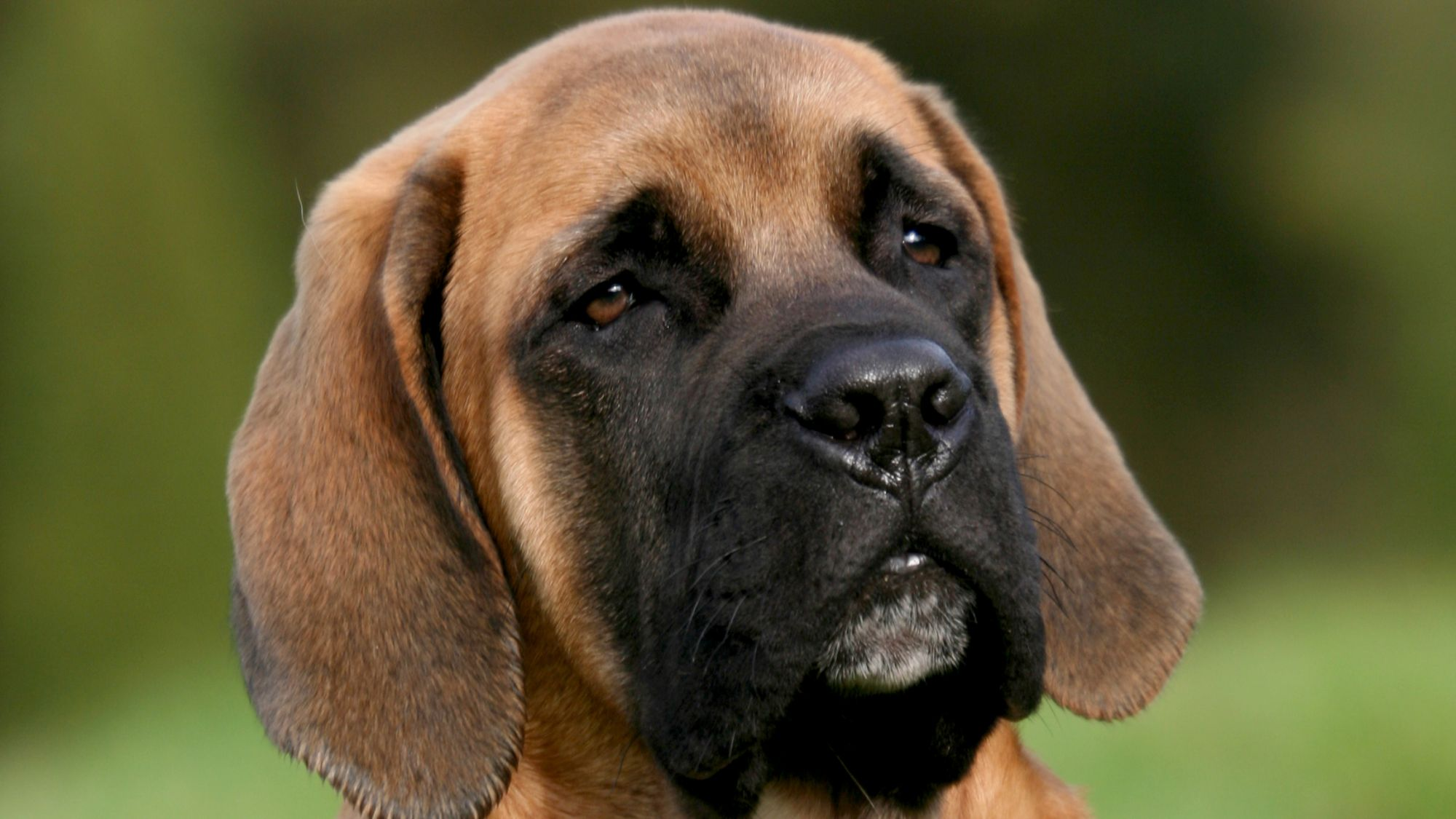
Get to know the Mastiff
All you need to know about the breed
Towering over all canines is the Mastiff, the largest breed of dog there is. Hulking limbs, sizable paws, and a giant head marked by a wrinkled forehead and folds of fur around the jowls comprise this sturdy canine. Their pensive look can only mean they’re contemplating how to keep their family safe and protected—what the Mastiff was bred for, as a guard dog, a duty they don’t take lightly.
The biggest dog also has a big heart, characterised by an affectionate personality and a fairly low-key activity level. The Mastiff definitely needs their daily exercise, including a good yard to run in, but they aren’t a high-energy breed and actually prefer an indoor environment. The Mastiff’s name derives from the Latin word “mansuetus,” meaning “tame” or “domesticated.”
An ancient breed that dates back many millennia – even B.C. – the Mastiff was initially used for security and even to fight in war, given their girth and fearlessness. As for their hygiene habits, Mastiff grooming is simple given their short-haired double coat, but drool is a thing. Being prepared for it – both mentally and physically, with cloths at hand – will be key to keeping you and your Mastiff on good terms.
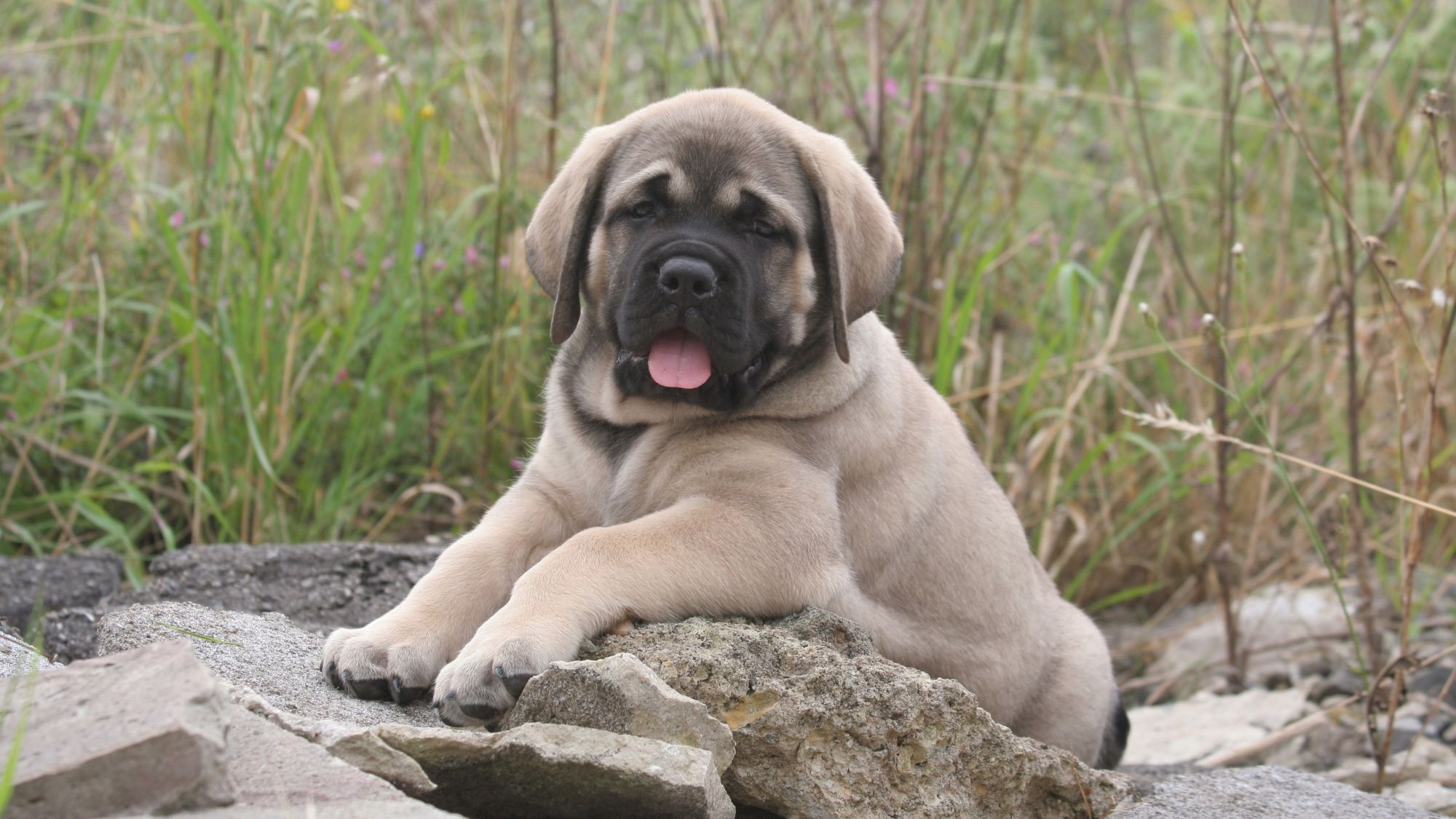
2 facts about Mastiffs
1. A nearly extinct breed
Although the Mastiff breed has been in existence for thousands of years, the dog we know as the English Mastiff had almost disappeared in their home country after World War II. It was thanks to some enthusiastic U.S. breeders who started to rejuvenate the dog’s population in England that they prevailed.
2. Shy? You?
Believe it or not, the Mastiff can have a timid temperament. One would think a dog with such a grand legacy and noble presence would be bristling with confidence but the breed can be shy around newcomers until they get to know them. Mastiff puppy training in the way of socialising the dog is immensely important. They’ll get used to the many new people who will eventually cross their path.
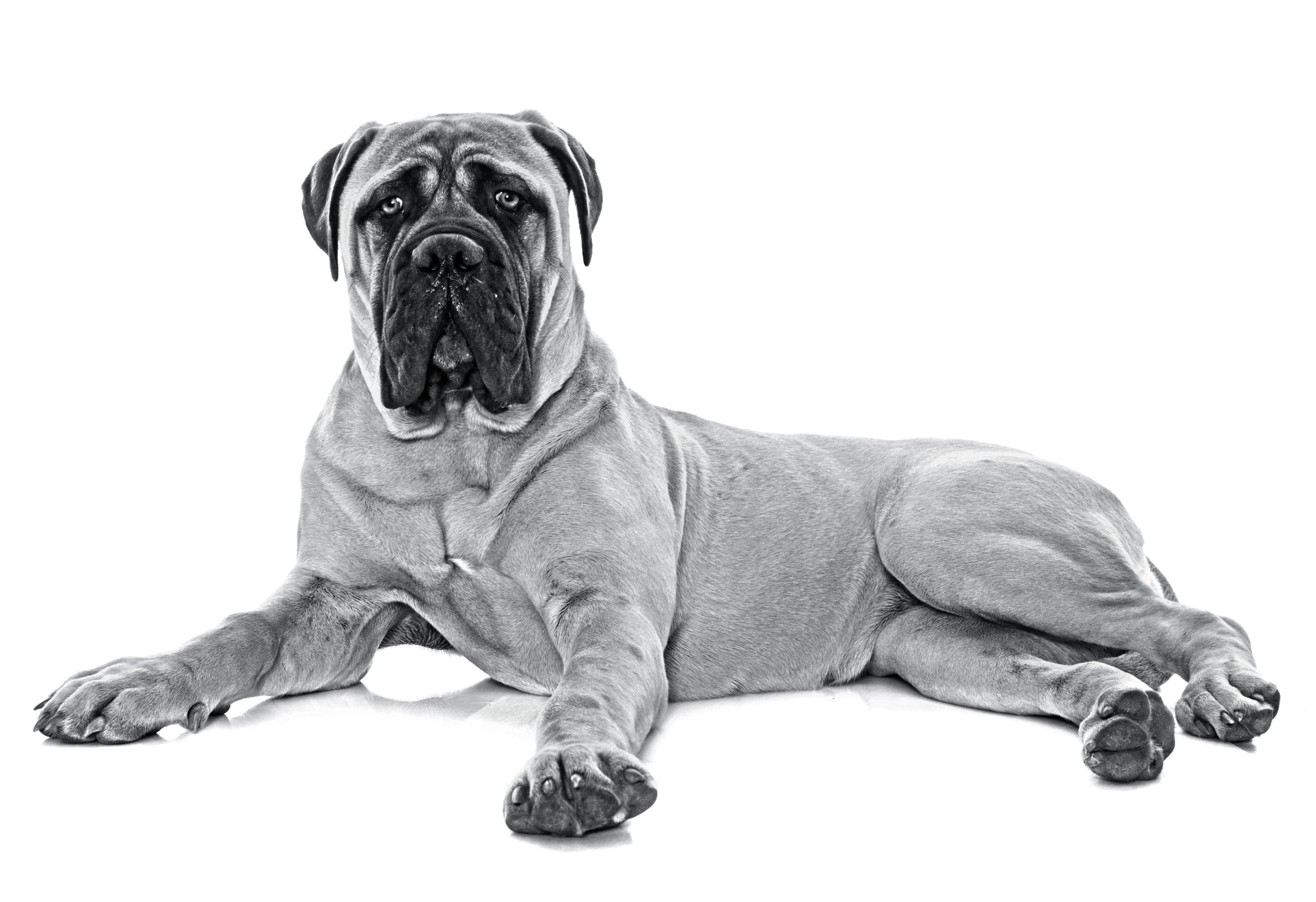
History of the breed
As the biggest known breed, the Mastiff can’t be missed. They are not to be confused with the mastiff variety, characterised by a powerful body, hulking head, and broad, short muzzle. 31 separate breeds are considered mastiffs.
The Mastiff proper – referred to as the English Mastiff – has thousands of years of history. Evidence in ancient Europe and Asia show the presence of vicious mastiff dogs. Noticed by Julius Caesar during his invasion of Britain in 55 B.C. for their prowess, the general brought the dogs to Rome to battle gladiators and animals in the arena.
In medieval England, the Mastiff was used for sport and security. Standing firm on British soil throughout the centuries, the Mastiff breed was almost extinct at the end of WWII when an estimated 14 were left. Enthusiastic U.S. breeders stepped in to export dogs hailing from good British stock and the breed was maintained.
From head to tail
Physical characteristics of Mastiffs
1.Ears
2.Head
3.Body
4.Tail
5.Coat
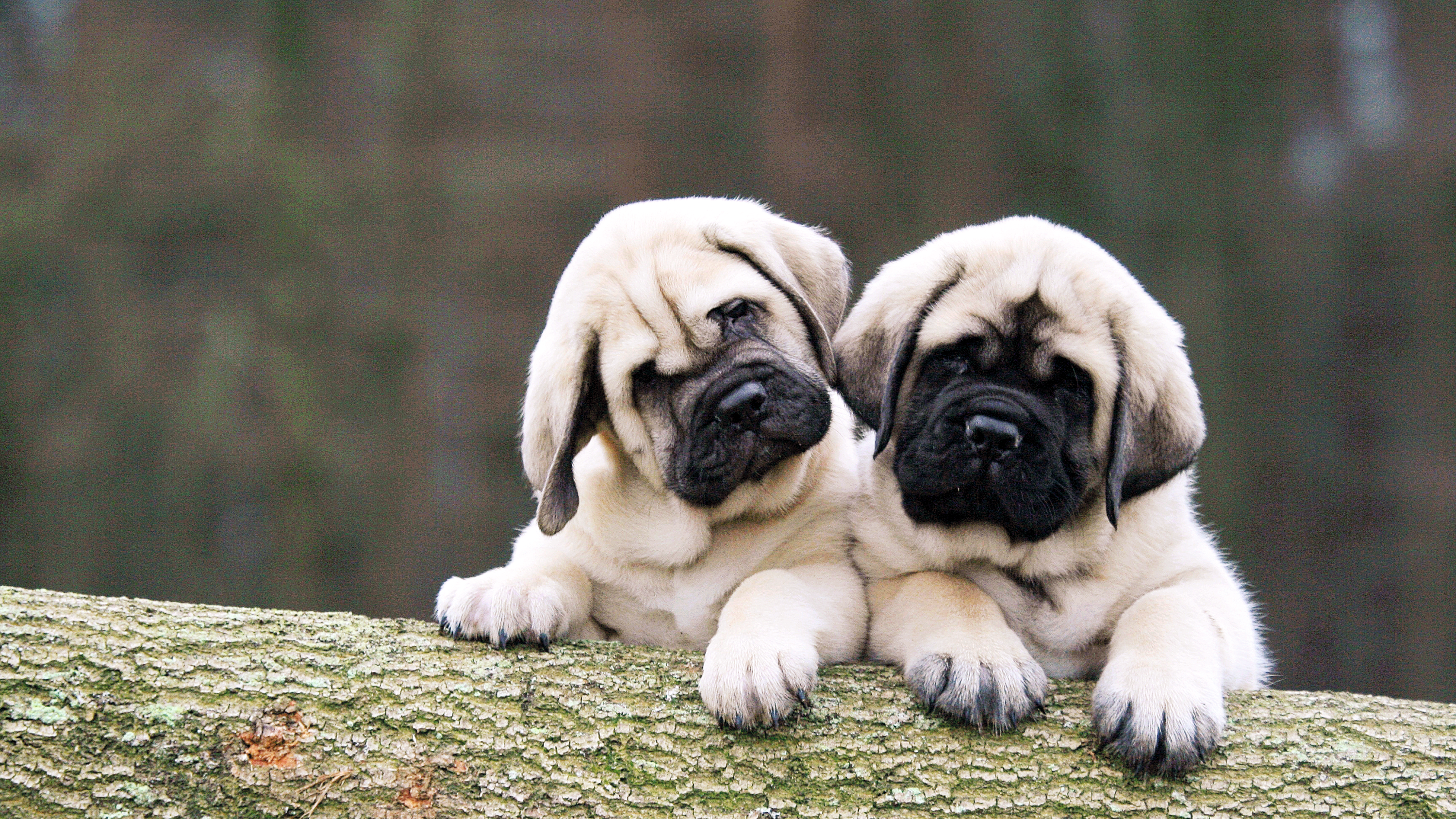
Things to look out for
From specific breed traits to a general health overview, here are some interesting facts about your Mastiff
Keep the health in check
The Mastiff’s size doesn’t go unnoticed, but it does matter as it relates to their health. Concerns like hip dysplasia and bloat can arise and should be watched. Eye anomalies and some cancers have occurred in the breed. They are also part of the brachycephalic family, Mastiffs dog types characterised by a flattened snout that can lead to respiratory problems. Proper screening tests at your veterinarian will help owners look out for issues before they arise.
Drool will happen.
One of the Mastiff’s most charming traits (yes, charming!) is their drool. The physical makeup of this dog is such that excess saliva pools in the folds of the skin aside the dog’s face. Sometimes, it has nowhere to go but out. Keeping cloths nearby for a handy wipe will clean things up in an instant.
Healthy diet, healthier dog
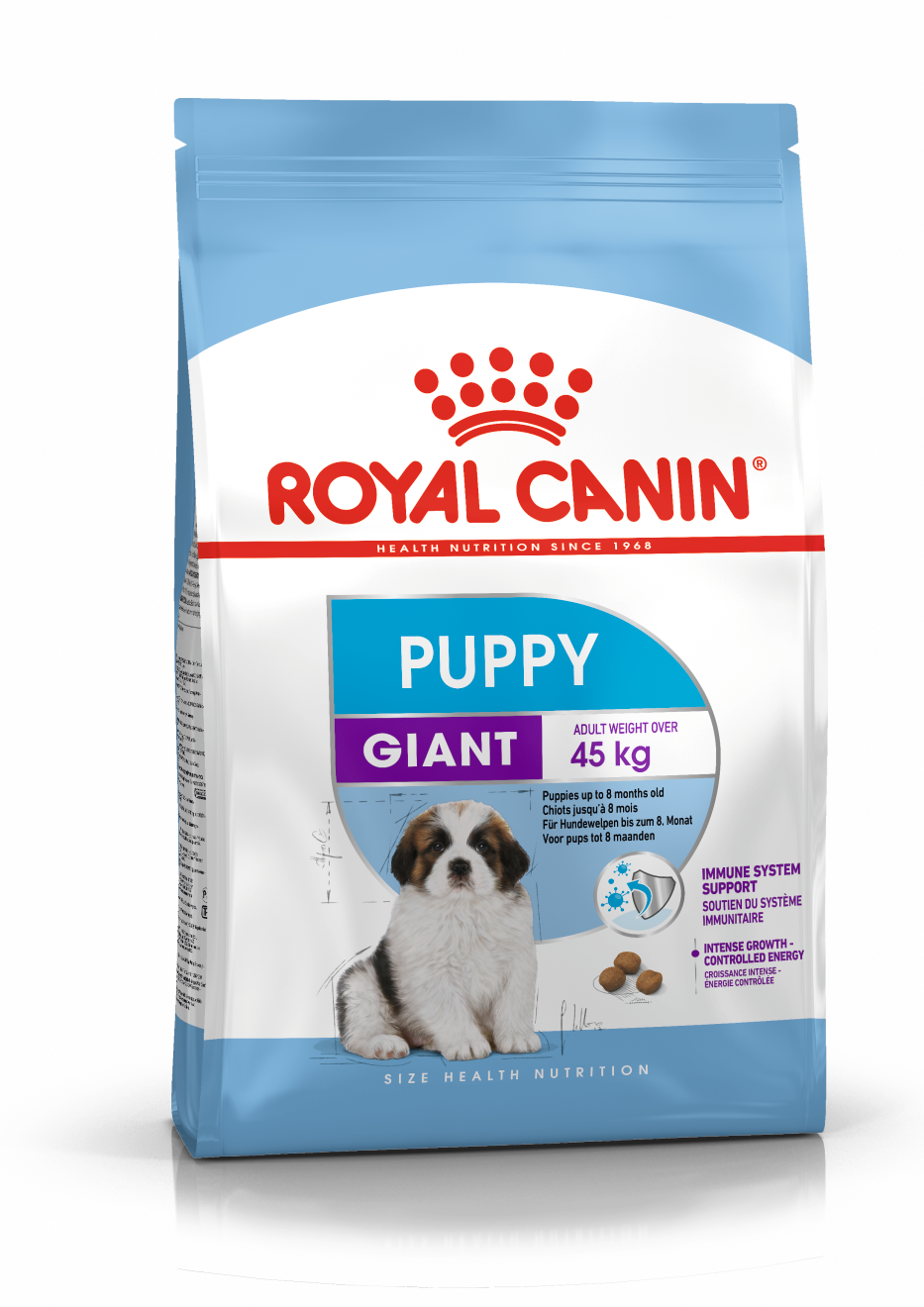
When choosing food for a Mastiff, there are many factors to consider: Their age, lifestyle, activity level, physical condition, and health including potential sickness or sensitivities. Food provides energy to cover a dog’s vital functions, and a complete nutritional formula should contain an adjusted balance of nutrients to avoid any deficiency or excess in their diet, both of which could have adverse effects on the dog. As giant-sized breed dogs have a higher risk of a condition called gastric dilatation volvulus (GDV), where the stomach becomes overstretched and rotated because of excess gas (usually caused by overfeeding during a meal), it’s recommended to split the daily allowance into three meals for puppies and try to keep this routine into their adult years. Clean and fresh water should be available at all times to support good urinary regularity. In hot weather and especially when out exercising, bring water along for your dog’s frequent water breaks. Energy intake may also have to be adapted to the climatic conditions. A dog that lives outdoors in winter will have increased energy requirements. The following recommendations are for healthy animals. If your dog has health problems, please consult your veterinarian who will prescribe an exclusively veterinary diet.
A Mastiff puppy’s requirements, in terms of energy, protein, minerals, and vitamins, are greater than those of an adult dog. They need energy and nutrients to maintain their body, but also to grow and build it. During their growth, a Mastiff puppy’s immune system develops gradually. A complex of antioxidants – including vitamin E – can help support their natural defences during this time of big changes, discoveries, and new encounters. Their digestive functions are different from an adult Mastiff, too: Their digestive system is not mature yet so it is important to provide highly-digestible proteins that will be effectively used for the building of bones, tissues, and organs. Prebiotics, such as fructo-oligosaccharides, can support digestive health by helping balance the intestinal flora, resulting in good stool.
Giant-sized puppies, whose growth period is long and intense, are especially susceptible to skeletal and joint problems, including limb defects, bone deformities, and joint lesions.
The first part of growth (up to 8 months) is mainly concerned with bone development, although the muscles also start to grow. This means that a puppy that eats too much (takes in too much energy) will put on too much weight and grow too quickly. A food with an adjusted calorie content to support a high growth rate while at the same time avoiding excess weight gain will help minimise these risks. A balance of energy and minerals (calcium and phosphorus) during this first phase of growth will contribute to bone mineralisation in order to support bone consolidation and the development of healthy joints. Although the calcium content in the food needs to be increased, giant-sized breed puppies are more sensitive to excessive calcium intake. It’s important to understand that adding any ingredients to a complete food formulated for the growth phase is at best unnecessary and at worst dangerous for the animal, unless prescribed by a veterinarian.
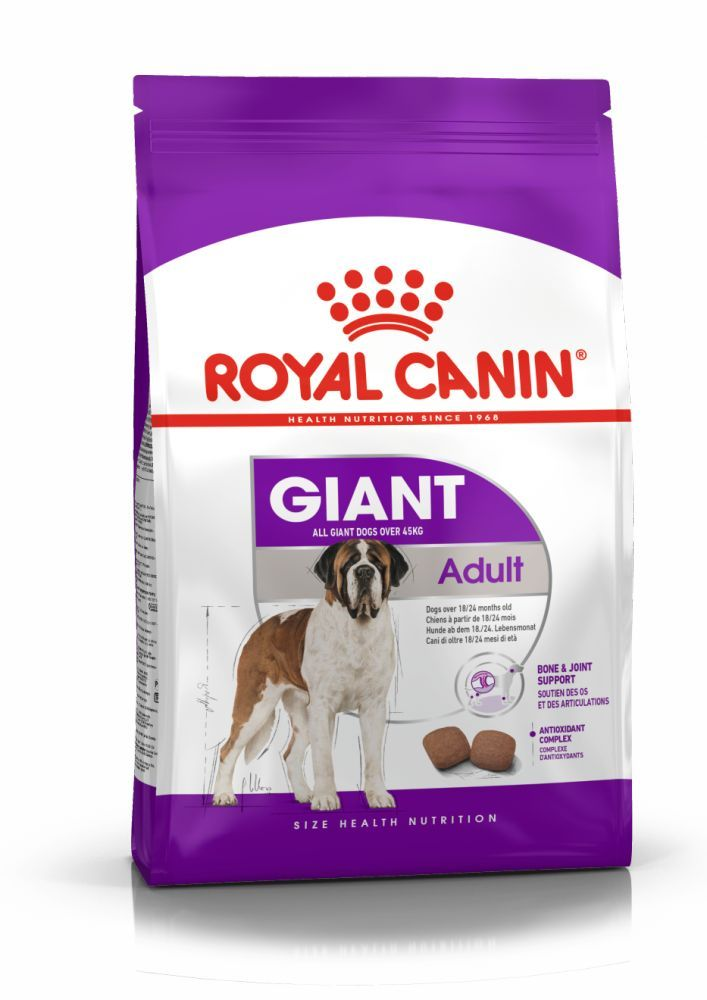
As with many giant-sized breed dogs, Mastiffs are prone to digestive sensitivity, and their body weight can create stress on their joints throughout their lifetime. Mastiffs’ nutritional needs then should include high-quality protein and a balanced supply of dietary fibre to help promote optimal digestibility, as well as glucosamine, chondroitin, and antioxidants to help support the health of their bones and joints. A formula enriched with omega-3 fatty acids, such as EPA and DHA, will help maintain healthy skin. An adapted taurine content is also important to support healthy heart function.
It is important to avoid feeding Mastiffs human foods or fatty snacks. Instead, reward them with kibble taken from their daily meal allowance, and strictly follow the feeding guidelines written on the package.
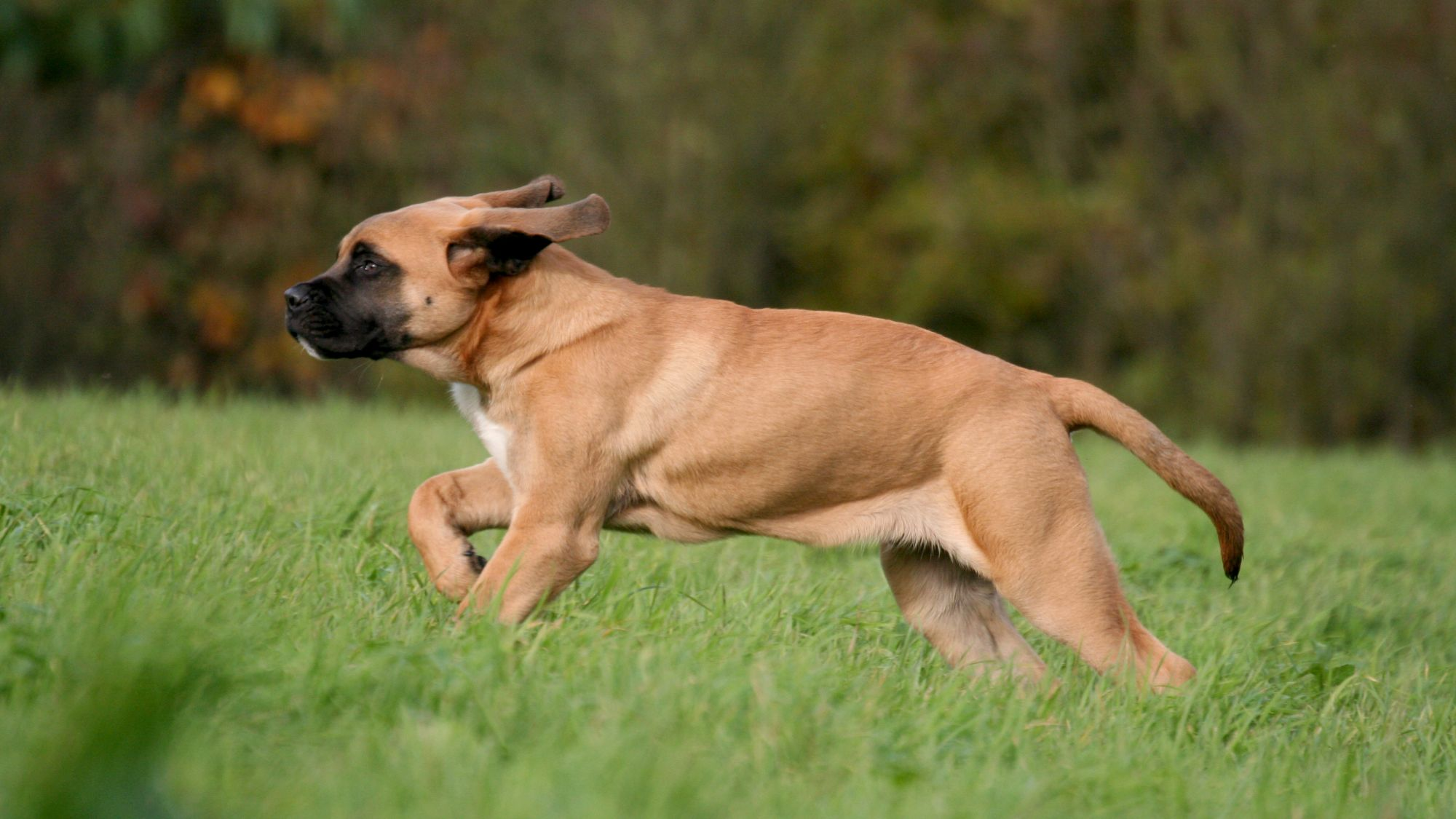
Caring for your Mastiff
Grooming, training and exercise tips
7/7
All about Mastiffs
Dogs – especially large breeds – lean on people to show their affection. It usually garners an “aww!” from the receiver but is actually a common behaviour and simply a sign that they’d like to be close to you. They’ll even sit on your feet or snuggle close to show they’re true blue. Dogs may also lean on their owner out of fear or insecurity over a newcomer in their midst.
Unflinchingly loyal to their owners, the Mastiff is an affable dog but can be quite wary of strangers. Teaching them good social skills as a puppy should keep them approachable. At an average of 100 pounds – whether male or female – the Mastiff is a big dog for most to handle but they are incredibly good-natured and enjoy being with their human family.
Suggested Breeds
Read more on this topic
- Veterinary Centers of America https://vcahospitals.com/;
- Royal Canin Dog Encyclopaedia. Ed 2010 and 2020
- Banfield Pet Hospital https://www.banfield.com/
- Royal Canin BHN Product Book
- American Kennel Club https://www.akc.org/
Like & share this page